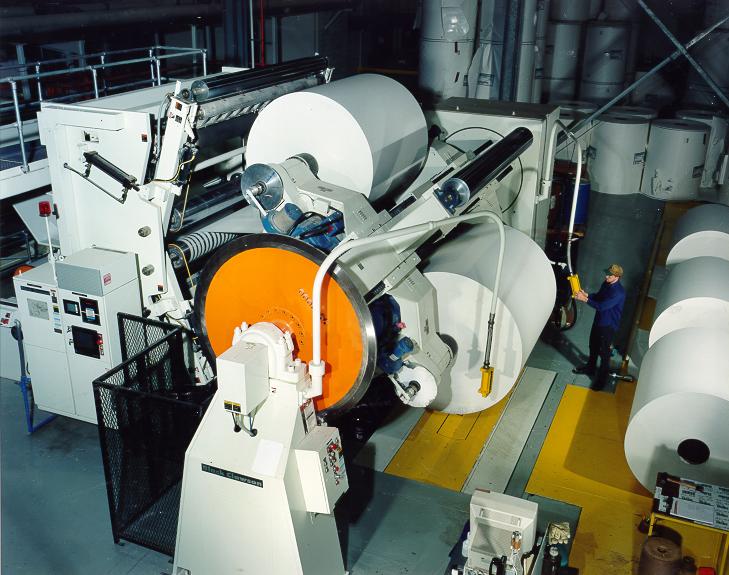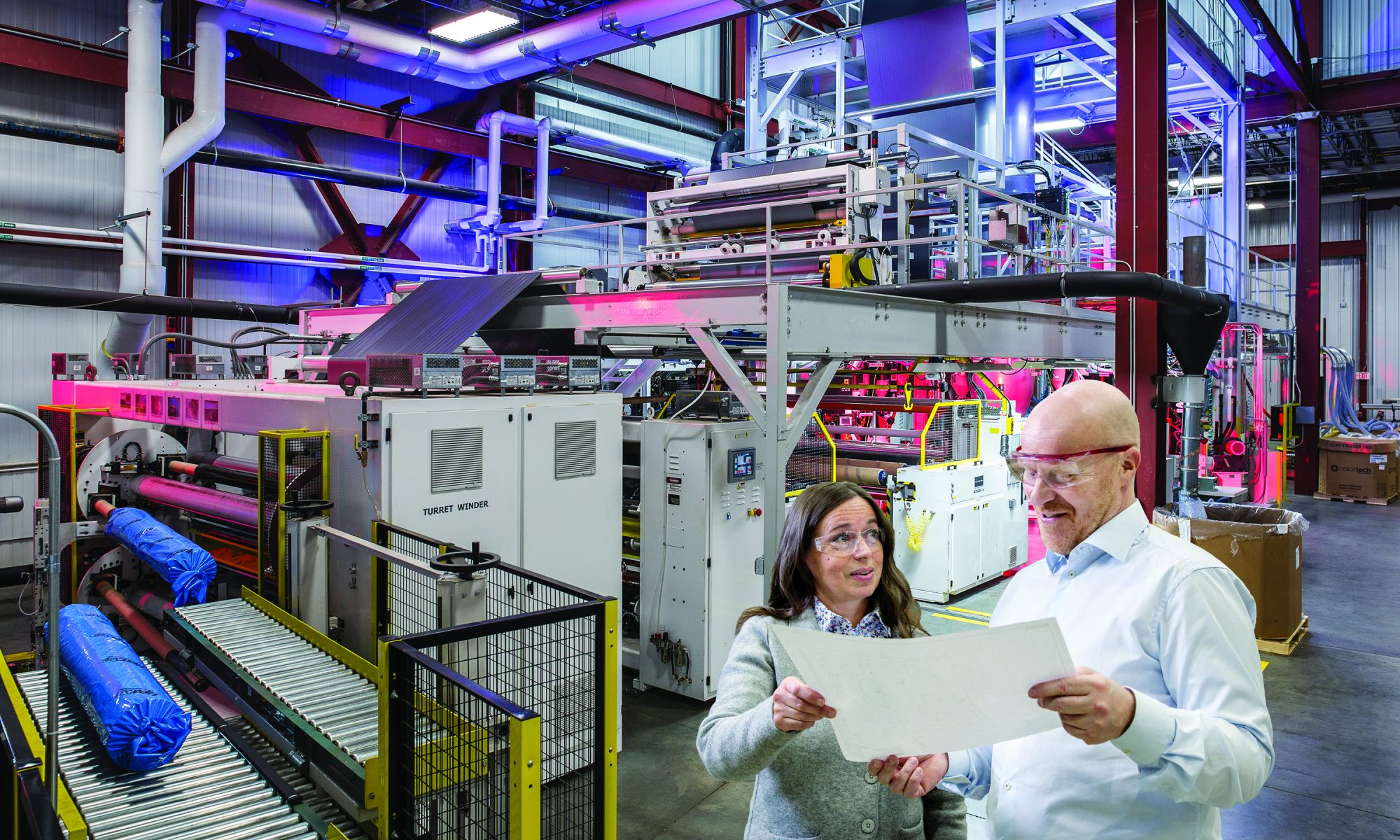 Welcome to the second blog of our winder series featuring the insight of our winding expert, Duane Smith.
Welcome to the second blog of our winder series featuring the insight of our winding expert, Duane Smith.
Continuous web processing efficiencies rely on the steady introduction of new rolls of material into the process at full production speed and without tension upsets. Industry trends lean toward higher line speeds and thinner materials. The unwinding of thinner, more tension-sensitive materials at smaller diameters and higher speeds puts greater demands on the splicing operation. To meet today’s productivity requirements for continuous unwinding and splicing operations, it is important to understand the components of a splicer operation. Optimizing each component is critical to improving splicing efficiency and total productivity. These components include: 1) splice preparation; 2) incoming roll speed; 3) splice tension; 4) paster operation; 5) cut-off operation; 6) tail length control; and 7) Predictive Splice Control Systems
Splice Preparation
Incorrect preparation of a new roll of material is the most common cause of missed splices. After a new roll is loaded into the unwind, the outer layers are removed until a clean, tear-free sheet is obtained. The leading edge of the web is then prepared. Many operations use a V-shaped leading edge. However, a square edge can be used on modern splicers, saving time and money. A square edge also allows splicing with a short, controlled tail length. The leading edge of the web is adhered to the roll using tear tabs placed approximately every 12 inches (300mm) along the leading edge. Then one or two strips of double-sided splicing tape are applied to the leading edge of the web to adhere the new roll of material to the expiring web. New splice tapes combine leading-edge hold-down and splice adhesive into a single tape
Many older splicers use an electric eye to detect the prepared splice. With these splicers, the operator must place a piece of reflective tape at the prepared edge of the new roll of material to be spliced into the line. Newer splicers do not require reflective tape. Indication systems such as lasers are used to register the prepared edge for automatic splicing operations.
Incoming Roll Speed
Just before splicing occurs, the incoming roll of material is accelerated so the outer surface is at or just below the line speed at the time of the splice. Attaining the correct speed match is extremely important in ensuring a trouble-free splicing operation. If the roll’s rotation is too fast, slack will occur in the web after the splice. If it is rotating too slowly, the high tension after the splice can pull the splice apart.
Splice Tension
For thin webs processed at high speeds, the tension needs to be controlled by a regenerative drive system. Splice tension refers to the web tension immediately after a splice occurs. The new incoming roll must switch from speed control to tension control without disturbing the process tension. This transition needs to be done right after the paste is made. The timing and braking torque from the drive’s logic is based on the diameter and tension setting, and critical for achieving the proper splice tension.
Paster Operation
The paster device irons on the expiring web to the adhesive on the tail of the new roll. Uniform and reliable pasting are critical for a consistent splicing operation. The paste must be firm and uniform across the roll for a good splice. The paster is positioned close to the incoming roll before firing onto the web and incoming roll of material. It needs to be driven to match the web speed and come into contact with the incoming roll parallel to the spindle centerline. The contact point should be 180 degrees from the prepared splice with a window of +/- 90 degrees. Contact too close to the prepared tail eliminates sufficient time to produce level contact pressure. Contact just beyond the prepared tail can cause the prepare tail to pull apart. That is why splice control systems are important for firing control. High-speed splicing operations of smaller diameter incoming rolls of material should be equipped with a servo-controlled pasting system. It’s important to note that pasting pressure is controlled separately from firing pressure.
Cut-Off Operation
The cut-off operation typically consists of a serrated knife that is fired into the expiring web. The direction of the knife penetration should be opposite of the web travel to obtain a clean cut regardless of web speed. On difficult-to-cut or stretchy materials, the knife may bounce off the web or deform the web as it is cut. For these materials, special configurations need to be applied such as an anvil knife cutoff system to cleanly sever difficult materials.
Tail Length Control
Tail length is important in making sure the splice will pass through the operation without catching along the web path and tearing or causing other issues during web converting or finishing. High-speed pasting and cutoff requires control with predictive technology for precise and consistent splicing of tail lengths. The operator programs the diameter of the expiring roll onto the splice control sequence so the transfer occurs close to that slice diameter. To consistently obtain short tail lengths during high-speed processes, the cut-off knife is controlled by a servo driven knife firing system.
Predictive Splice Control Systems
High speed splicing control systems require predictive splice control systems. Predictive splice control system measures the web length of each revolution of the roll to be spliced. The reaction time of the paster and knife in terms of web length is calculated. The paster and knife mechanisms are then synchronized so the cut web coincides with the prepared tail at the paste point and severs the web for the programmed tail length.
Modern control systems incorporate splice tracking to follow the location of the splice as it proceeds down the line. Nips can be automatically opened and closed as the splice passes. Splice tracking can also initiate the winder roll change cycle before an unwind splice has been made so the splice will end up either on the outer wrap of the finished roll or at the core of the new wound roll, depending on the splice placement selected.
We hope this helps you achieve the splicing accuracy needed to improve the production and profitability of your operation.
Have questions regarding part 2 of the winding series? Comment below or email marketing at marketing@davis-standard.com.
Cheers,
The D-S Connect Blog Team
